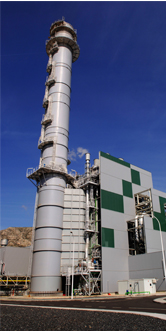| Zoom Window |
Within this context is the Proposal for a Regulation for Trans-European Infrastructures and the Nabucco Proposal. Along with this is the beginning of operation of the Medgaz pipeline in the first trimester of the year, the Italy Greece Interconnector (IGI), the GALSI pipeline (between Algeria and Italy, through Sardinia), the Trans Adriatic pipeline (TAP), one of the projects of the Corredor Sur and in the phase of environmental impact studies, or the Baltic Countries connection project, among others.
On November 8 the first of two pipelines that form the Nord Stream pipeline began operating. It is designed to transport 55 bcm of gas per year (when the second parallel line is operative in 2012) from Russia to Germany, straight through the Baltic Sea. It is 1,224 Km long.
The people pushing the Nabucco Project have postponed their final investment decision until 2013. When it is operation, it will transport 31 bcm of gas from the Caspian Sea area to Europe.
The MidCat Project, or the Mediterranean Corredor construction initiative deserves a special mention, with a connection between Spain and France with optimistic perspectives once the Rhone or Eridan project has been approved. It will boost the capacity of the north-south flow of gas in France. The Eridan project is the construction of 220 Km of pipeline between Saint Martin de Crau and Saint Avit.
Serbia and Montenegro have agreed to the construction of a common pipeline network in the South of Serbia.
The Trans Adriatic Pipeline (TAP) has obtained exemption to third party access in the three countries that it passes through in the last trimester of 2011, Albania, Greece and Italy. This pipeline is designed to transport 20 bcm/year from the Turkey/Greece border of Komotini to near San Foca, which belongs to the Italian gas system. The current predictions show that it will be operating in 2017-2018.
The construction plans for the new LNG terminals are also important.
It is important, for example, to point out that in June an agreement to construct a regasification plant in Dunkerque (France) was signed. With a tank capacity of 190,000 m3, it would be operating in 2015. The LNG importation capacity in France would increase by 20%.
Lithuania still has plans to construct an LNG plant in Klaipeda. Its capacity would be 2.2 million Mt and it would be ready in 2014. There are three LNG construction plant projects in the Baltic States. Discussions are being held for common use in one case which would reduce the number.
In March 2011, in Poland, the construction of an LNG terminal in Swinoujscie was started. The investment should be complete halfway through 2014. It will inject 5 bcm of Polish natural gas in the system per year, with a possible expansion of up to 7 bcm.
In September, in the Rotterdam Port, one of the biggest LNG terminals in Europe was inaugurated. The Gate Terminal has three storage tanks of 180,000 m3 each. This terminal aims to be an entrance point for gas into the Central European market.

-
 Naturgas
Naturgas


